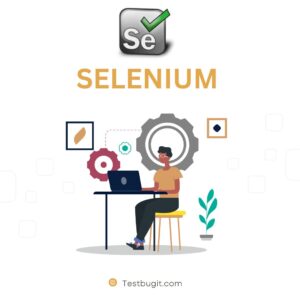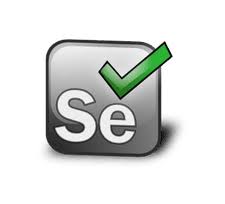Selenium Course
Testbug IT Solutions: Selenium Course Training with Real-Time Projects and Placements
Testbug IT Solutions is a leading provider of IT training, offering specialized Selenium course training designed to equip students and professionals with in-demand automation testing skills. Selenium is an open-source testing framework used for validating web applications across different browsers and platforms. The course offered by Testbug IT Solutions is carefully structured to provide comprehensive learning, from beginner to advanced levels, ensuring that learners gain expertise in both theoretical concepts and practical implementation.
Upcoming Batches
Salenium Training
10-Sept-2024
7:00 am

[ 
Key Features of the Selenium Course:
- Real-Time Projects: One of the standout features of Testbug IT Solutions’ Selenium course is the emphasis on hands-on experience. Learners get to work on real-time projects that simulate real-world scenarios. This practical approach allows students to apply the knowledge they’ve gained in actual projects, improving their understanding of automation testing and problem-solving capabilities.
- Industry-Relevant Curriculum: The course is regularly updated to include the latest advancements in Selenium, ensuring that learners are well-prepared to handle real-world testing challenges. Key topics such as Selenium WebDriver, TestNG framework, Jenkins integration, and automation frameworks are covered extensively.
- Placement Assistance: Beyond just offering training, Testbug IT Solutions is committed to helping students secure employment. The institute provides placement assistance, working closely with industry partners and IT companies to help graduates find job opportunities. Mock interviews, resume building, and career counseling are part of the placement program, ensuring that learners are job-ready.
- Expert Trainers: The training sessions are led by experienced professionals who have extensive knowledge of Selenium and automation testing. Their real-world experience helps students gain valuable insights and understanding of industry practices.
Selenium Training In Hyderabad
Course
Curruculum
Module 1: Automation Basics
- Automation Basics
➢Fundamentals Of Test Automation
➢What Are the Advantages Of Automation Testing
➢Introduction to Selenium
➢What Selenium Is AND how it is used in real time
➢Features of selenium
➢Versions in selenium
Module 2: Selenium IDE➢ What is Mean by Selenium IDE➢ How to installing Selenium IDE➢ Building test Scripts in Selenium IDE➢ Running Test Scripts in Selenium IDE➢ Locating elements on the web page by using selenium IDE.➢ Advantages and Disadvantages of selenium IDE.
Module 3: Selenium Web Basics -1
➢ Selenium Web Driver Overview
➢ Configuring Web Driver In Eclipse.
➢ Web Driver Architecture.
➢ Web Driver Drives.
➢ Locating Elements in Web Driver.
➢ Handling Elements.
➢ Running test In Multiple Browsers.
➢ Synchronizations [Waits].
➢ Handling Java Script Alerts,
➢ Prompts and conformations
Module 4: Selenium Web Driver Basics-2
- ➢ Handing multiple frames.
➢ Handing Multiple Windows.
➢ Capturing Screenshots
➢ Browser Navigation
➢ Handing Auto Suggestions
➢ Handing Web Tables.
➢ Finding Broken Links .
➢ File Upload And Download Using Robot Class and Auto It
Module 5: TESTING
➢ What is Testing?
➢ How to Install TestNG Plug-in in Eclipse
➢ Features In TestNG.[Annotations]
➢ Assertions
➢ Writing Selenium Test Scripts From Scrath In TestNG
➢ Generating Reports IN TestNG.
Module 6:Project Details
- ➢ Application Overview
➢ Banking Project Overview
➢ Project Description
➢ Tools Used In The Project.
(Maven, GitHub, Jenkins ,Docker and Auto IT)
➢ Roles and Responsibilities
Module7:Automation Process
➢ Automation Life Cycle
➢ Identify Test cases What To BE automated.
➢ Authoring The Scripts
➢ oAnalyse the Reports
Module 8: Web Driver –Framework
➢ Introduction to Various Frameworks.
➢ Data Driven Tests Using POI
➢ Reading, Writing data into Excel.
➢ Data base Connection (JDBC).
➢ Reading , Writing Data Into MYSQL, SQL.
➢ Page Object Model Framework (POM).
➢ Writing Scripts Using POM.
Module 9:TestNG
- ➢ Configuring Test Suits.
➢ Passing Parameters to Tests.
➢ Parallel Test Execution Capability.
➢ Re-run Failed Test Scripts.
➢ Attributes of @Test.
➢ Running TestNG Suite from Command Prompt.
Module 10:Buil Automation Tool [Maven] Creating Maven Project➢Understanding of POM.XML➢Maven Integration With TestNG➢Executing Scripts Using Maven Build Tool. Cucumber Frame Work ➢Overview of BDD ,TDD. ➢Cucumber project Setup.➢Gherkin Keywords.➢Working With Simple Scenario.➢Cucumber Options➢Generating Cucumber Reports. a)Working With Data table b)Page Object Model in Cucumber. c)Background and Hooks Example in cucumber. Continuous integration tool (Jenkins) ➢Configuring Jenkins. ➢Executing the windows commands in Jenkins free. ➢Creating Maven Job. ➢Manage Plug –Ins. ➢Scheduling the Jobs.
Module 11:Git Hub
➢ What is Version Control System.
➢ What Is GitHub.
➢ Git Commands.
➢ Pushing our project into GitHub.
➢ Git vs Github.
Module 12: Selenium Grid ➢ What Is Selenium Grid. ➢ Setting up Grid- Hub and Nodes ➢ Running test Scripts on Selenium Grid.
Module 13: API Manual Testing Api Testing Essentials.➢Web Services Testing Introduction.➢Why Do We Need web Services?➢Types of Web Services A) SOAP B) REST ➢Difference Between SOAP AND REST MORE.➢What Is API➢What is Rest API➢Why Rest is Architecture.➢URL vs URI vs API.➢HTTP Introduction .➢HTTP Methods : POST, PUT, GET, DELETE, PATCH.➢POSTMAN TOOL Introduction.➢Practise Different API POSTMAN tool.➢Collection Variables vs Global Variables.➢Explore Header➢Header Types. A) Fixed Headers B) Dynamic Headers➢Parameters➢Different Types Of Parameters . A) Path Parameter b) Query Parameter C) Header Parameter d) Body Parameter ➢Different Authorizations in Postman.➢HTTP Status Code A) Informational b) Success C) BI- Direction d) Client Said Error e) Server Said Error ➢Data Driven Testing Postman Tool.
